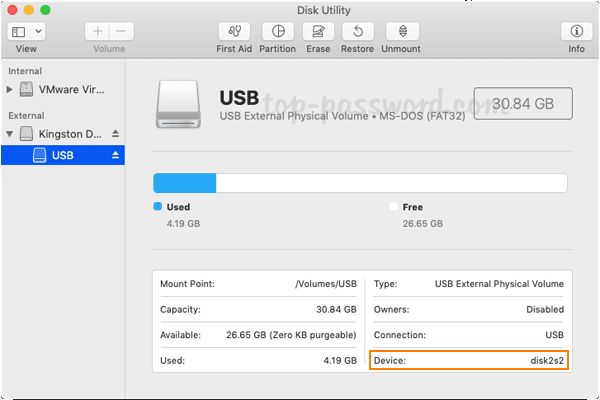

- #Formatting a usb d4ive in mac for windows how to
- #Formatting a usb d4ive in mac for windows install
- #Formatting a usb d4ive in mac for windows Pc
- #Formatting a usb d4ive in mac for windows windows
FAT32 has a maximum file size of 4 GB per file. This will allow you to use the hard drive on both a Mac and PC.įAT32 is often used among general users, but FAT32 has limitations that can affect filmmakers. To do this, you will need to use either exFAT or FAT32 formats. If you need to send them RAW files or an edited sequence, you will need to make sure the external hard drive is set up for both operating systems. You may be using only Macs or PCs in your own office, but you will also need to take into account what type of machines your client is using.
#Formatting a usb d4ive in mac for windows Pc
That said, if you are using both a PC and Mac in the workflow, you’ll need to use a different format.
#Formatting a usb d4ive in mac for windows windows
Hard drives set up for use on Windows machines only will often use NTFS, while Macs will use HFS+. Formatting the Hard DriveĪ vast majority of video production will be done on a Mac or Windows operating system, so we aren’t going to cover Linux. Let’s take a look at the different types of formats, and which are best for video production. If you work solely on a Mac, but need to send files to someone working on a PC, your external hard drive needs to be set up for both operating systems. Eventually you will find out that you may not be working on the same operating system (OS) as others. Use these steps to format external hard drives for both operating systems.Īs a video editor or Digital Imaging Technician, you will often need to share files with others.

#Formatting a usb d4ive in mac for windows how to
How To Copy Files From macOS To USB External Hard Drive In Command-Line.
#Formatting a usb d4ive in mac for windows install
Open a terminal and run the command $ brew install ntfs-3g to install NTFS-3G.Install NTFS-3G To Make MacOS Support Read-Write Microsoft Windows NTFS File System. After the format process complete successfully, you can copy files from macOS to USB disk successfully.Ģ.

Select ExFAT in the Format drop-down list and begin to format. Then click the Erase button at the top of the right panel.Open macOS Finder -> Applications -> Utilities -> Disk Utility.So we should change the USB Disk file format to others such as FAT or ExFAT. So if the USB disk is NTFS format, then the copy and paste operation can not be operated. The main reason for this issue is macOS can only read NTFS format files but can not write files to NTFS disk. Format The USB Disk With ExFat File Format.


 0 kommentar(er)
0 kommentar(er)
